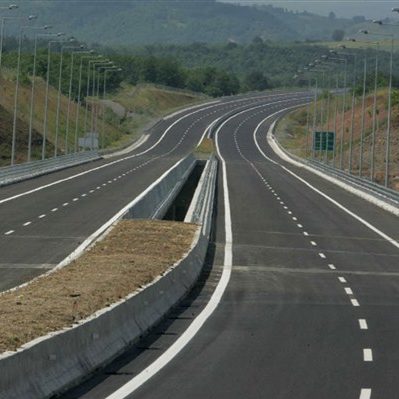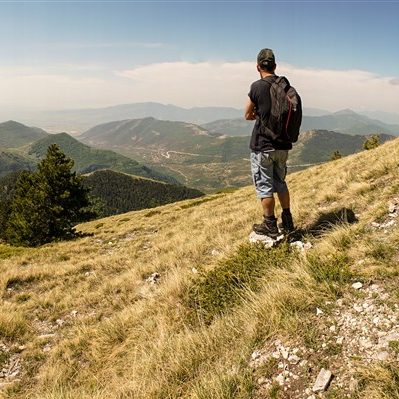Philippi, was the first European state where Saint Paul preached and Drama, as it was an archbishopric, dependent on the metropolis of Philippi, was taught orthodoxy only from the 1st century AD.
The patron saint of Drama is Saint Barbara, who has given her name to the area where her church is located. The current church was built in 1920 over the pond where the foundations of the old church are located.
The Holy Church of Agia Sophia is the oldest surviving building in Drama. Its age already exceeds a thousand years, since, according to experts’ estimates, its construction is placed, together with the construction of the walls, in the 10th century.
Panagia Eikosifinissa, with its handmade miraculous icon, is one of the largest pilgrimages in Macedonia and is the oldest active monastery in Greece and Europe. In the verdant Pangaio, at an altitude of 753 meters, it is located on the borders of the prefectures of Serres – Kavala, but ecclesiastically it belongs to the Metropolis of Drama.
The founding of the martyr monastery of Macedonia is lost in the depths of the centuries. Many traditions state that Saint Germanos, who was an ascetic in the Holy Monastery of Prodromos, on the Jordan river, left Palestine and with a vision he saw from an angel from the Virgin, came to the place of Vigla of Pangaeus in 518 AD. A little earlier, the bishop Philipps Sozon (5th century) had founded a monastic settlement nearby, which was abandoned.
Traveling between the small and large villages of the Prefecture of Drama, over 33 post-Byzantine churches were built from 1815 to 1890 and testify that Orthodoxy remained steadfast during the passing of the Turkish rule. Their main characteristic is that they are based on the personal work of the local residents and for this reason they are particularly frugal. Their type is the basilica, while the icons follow a naturalistic style.
Starting from the north of the Prefecture, just 500 meters from the border, we come across the now-ruined village of Akrino, where the temple of Taxiarches is located. Nevertheless, crowds of people rush to worship every year on November 7-8, the days he celebrates. The church is dated to have been built in 1848 from carved stone while the 19th century frescoes and its tower bell tower stand out.
Descending, we come across the village of Dasoto and the church of the Dormition with its special wooden false turret built in 1870
Then we come across the village of Perithori and the church of Agios Nikolaos with its beautiful bell tower and wood carvings that stand out, dating back to 1835. In the same village is also the church of Zoodochos Pigi which was built in 1876 in the form of a three-aisled basilica with a vaulted roof.
In Kato Vrontou is the church of Agioi Theodoros from 1835 with the heirloom bells. The same church is also rumored to have functioned as a secret school in the 1900s
In the famous Nevrokopi is located the church of Agios Dimitrios, built in 1866. Its type is a basilica of large dimensions. Three pairs of columns support the twelve-sided dome, while its three-tiered belfry is impressive.
In the village of Exochi, a short distance from the traditional Turkish baths, we find the church of Agios Athanasios from 1866. The interior decoration of the church was unfortunately destroyed by fire.
In Lefkogeia, just beyond the beautiful lake of Lefkogeia, dominates the church of Agios Ioannis the Forerunner, built in 1836
In another ruined village of the Lekanopedi of Nevrokopi, in the village of Livadaki, a very beautiful church stands unchanged over time, the church of the Dormition of the Theotokos which dates back to 1870. Its bell tower was built 20 years while its wood-carved iconostasis is also remarkable.
In the direction of Achladia in the area of Krithara, there is the church of Agios Georgios from the middle of the 19th century.
Further east, in the center of the traditional Pagoneri, we find the church of the Isovians of the Mother of God. The church was built in 1835, while the tower-shaped bell tower of carved granite in 1881.
In the picturesque village of Volakas, the church of Prophet Ilias since 1841 stands out with its independent stone bell tower.
In the village of ¨Granitis¨ in the old settlement, there is the majestic and imposing church of Taxiarches from 1873 with a characteristic type of three-aisled, wooden-roofed basilica.
In the historical Fort, we find the church of Agia Triada which was originally built in 1882 and reconstructed in 1972 after the war.
Descending towards Drama in Kokkinogeia after the cave of Agitis, there is one of the oldest churches in the area, that of Taxiarches, which is estimated to have been built in 1820 and its stone bell tower in 1886.
There are two churches in Panorama. The first is that of the Dormition of the Virgin, dating from the mid-19th century, with a type of triple-glazed wooden basilica roof, a wood-carved iconostasis and an impressive bell tower covered with ivyys.
Three kilometers to the north, the church of Agios Dimitrios from 1865 impresses with its octagonal dome and surviving frescoes.
On the borders of the prefectures of Drama and Serres, in the pine forest of Perichora, there is the women’s monastery of Agios Minas, the construction of which dates back to 1950. There were many difficulties, but with the encouragement of Agios Georgios Karslides and the help of the residents, the monastery was completed in 1957.
In the village of Mikropoli, Agios Georgios, built in 1841, is the lowest church that was designed so that the Turks could not see it.
Towards the east, the beautiful village of Kali Vrysis is dominated by the church of Agios Nikolaos from the middle of the 19th century and the Monastery of Agia Marina from 1883.
Continuing on the same route we meet Agia Paraskevi in Kallithea. The completion of the works is dated between 1866-1891. Of interest are the rumors that Agia Paraskevi appeared to a resident of the area and indicated to him the spot where the relic was found and then the church was built. In the same area is Agios Athanasios with the tower bell tower and the hewn stone (1832 -1869)
Before entering the city of Drama is the village of Xiropotamos and Agios Theodoros, built in 1815.
Among the post-Byzantine churches in the city of Drama is the church of the Entry of the Virgin Mary, which today has been replaced by a new church.
On our way to the famous forest of Elatia, dominates the famous for its settler and founder, Agios Georgios Karslides, women’s monastery of the Ascension of the Savior (Sipsa) in the village of Taxiarches.
Post-Byzantine churches without much information about them are Agios Georgios in Monastiraki, Agios Athanasios in Doxato, Agios Nikolaos in Andriani and the Monastery of the Transfiguration of the Savior in Prasinada, 52 kilometers northeast of Drama, on the way to the Rhodope forests.
The treasures of the Orthodox tradition can be seen gathered in the ecclesiastical museum of the Metropolis of Drama, next to the episcopal palace of the city, after prior communication with the offices of the ecclesiastical authority.




